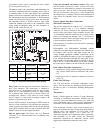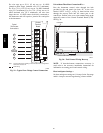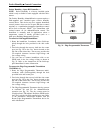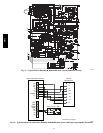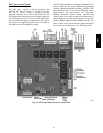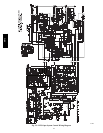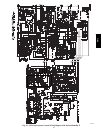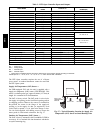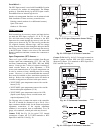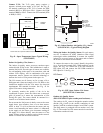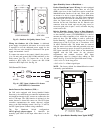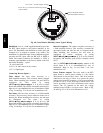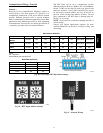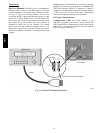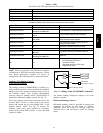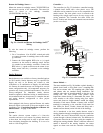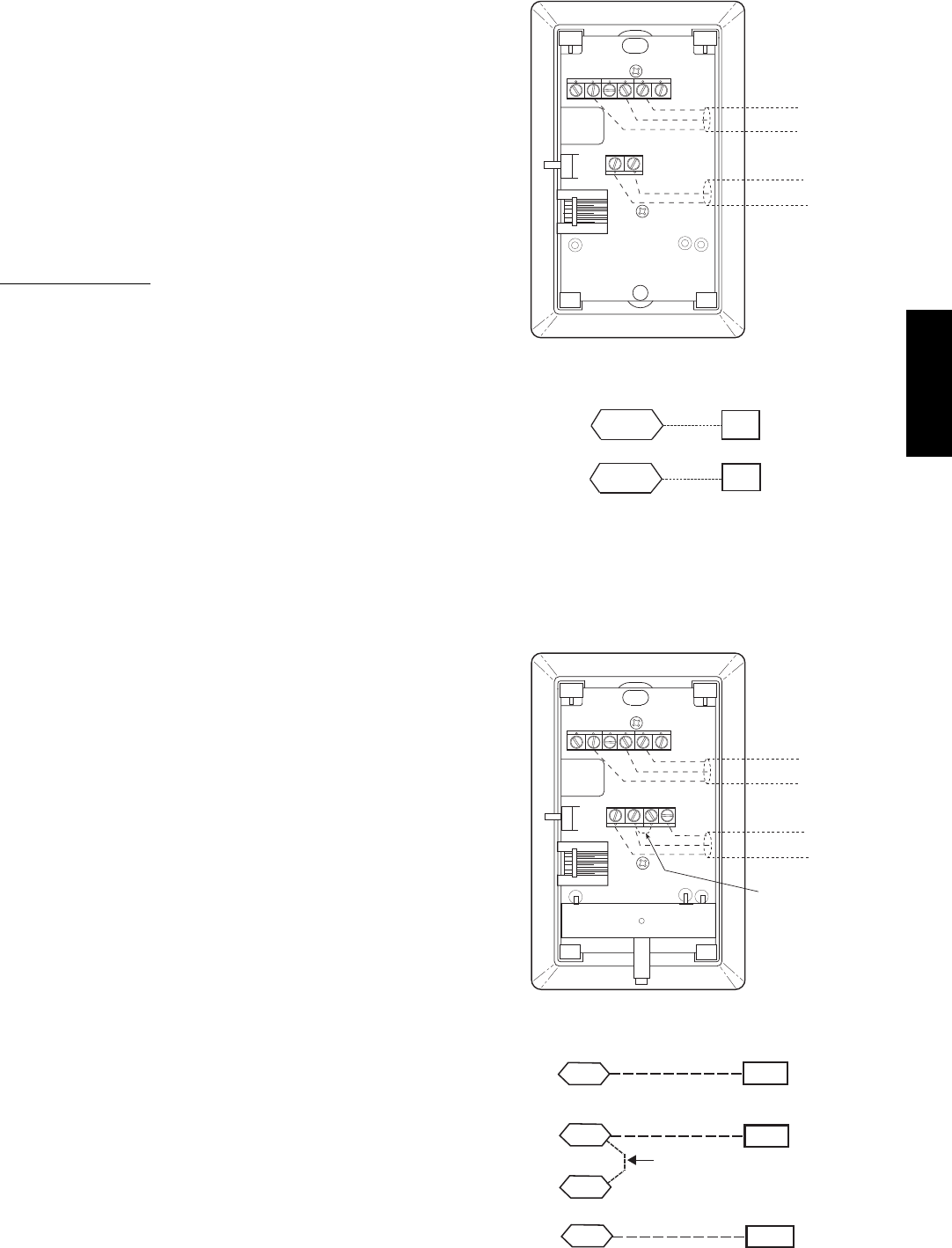
27
EconoMi$er2 —
The RTU Open control is used with EconoMi$er2 (option
or accessory) for outdoor air management. The damper
position is controlled directly by the RTU Open control;
EconoMi$er2 has no internal logic device.
Outdoor air management functions can be enhanced with
field--installation of these accessory control devices:
Enthalpy control (outdoor air or differential sensors)
Space CO
2
sensor
Outdoor air CO
2
sensor
Field Connections
Field connections for accessory sensors and input devices
are made the RTU Open, at plugs J1, J2, J4, J5, J11 and
J20. All field control wiring that connects to the RTU
Open must be routed through the raceway built into the
corner post as shown in Fig. 30. The raceway provides the
UL required clearance between high-- and low--voltage
wiring. Pass the control wires through the hole provided in
the corner post, then feed the wires thorough the raceway
to the RTU Open. Connect to the wires to the removable
Phoenix connectors and then reconnect the connectors to
the board.
Space Temperature (SPT) Sensors —
There are 2 types of SPT sensors available from Bryant,
resistive input non-communicating (T55, T56, and T59)
and Rnet communicating (SPS, SPPL, SPP, and SPPF)
sensors. Each type has a variety of options consisting of:
timed override button, set point adjustment, a LCD
screen, and communication tie in. Space temperature can
be also be written to from a building network or zoning
system. However, it is still recommended that return air
duct sensor be installed to allow stand-alone operation for
back-up. Refer to the configuration section for details on
controller configurations associated with space sensors.
S 33ZCT55SPT, space temperature sensor with override
button (T--55)
S 33ZCT56SPT, space temperature sensor with override
button and setpoint adjustment (T--56)
S 33ZCT59SPT, space temperature sensor with LCD
(liquid crystal display) screen, override button, and
setpoint adjustment (T--59)
Use 20 gauge wire to connect the sensor to the controller.
The wire is suitable for distances of up to 500 ft. Use a
three--conductor shielded cable for the sensor and setpoint
adjustment connections. If the setpoint adjustment
(slidebar) is not required, then an unshielded, 18 or 20
gauge, two--conductor, twisted pair cable may be used.
Connect T--55: See Fig. 38 for typical T--55 internal
connections. Connect the T--55 SEN terminals to RTU
Open J20--1 and J20--2. See Fig. 39.
2
3
45
61
SW1
SEN
BRN (GND)
BLU (SPT)
RED(+)
WHT(GND)
BLK(-)
CCN COM
SENSOR WIRING
C08201
Fig. 38 -- T--55 Space Temperature Sensor Wiring
SEN
SEN
J20-1
J20-2
C08460
Fig. 39 -- RTU Open T--55 Sensor Connections
Connect T--56: See Fig. 40 for T--56 internal connections.
Install a jumper between SEN and SET terminals as
illustrated. Connect T--56 terminals to RTU Open J20--1,
J20--2 and J20--3 per Fig. 41.
2
3
45
61
SW1
SEN
SET
Cool Warm
BRN (GND)
BLU (SPT)
RED(+)
WHT(GND)
BLK(-)
CCN COM
SENSOR WIRING
JUMPER
TERMINALS
AS SHOWN
BLK
(T56)
C08202
Fig. 40 -- T--56 Internal Connections
SEN J20-1
J20-2
SEN
SET
Jumper
J20-3
SET
C08461
Fig. 41 -- RTU Open T--56 Sensor Connections
581J



